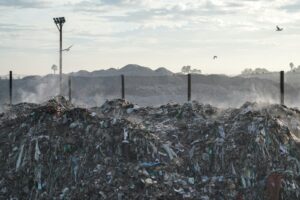Edinburgh’s air quality mission
Edinburgh City Council has announced plans to introduce a parking permit surcharge for diesel cars, as part of its work to tackle pollution in the city. The move is part of the council’s Parking Action Plan, which is currently out to public consultation until January 28 next year. Westminster City Council already has a diesel surcharges on residents’ parking permits and local authorities are also believed to be considering the idea. Environment Journal spoke to Edinburgh’s transport convener, Lesley Macinnes, about the local authority’s plans.
How bad is the air quality situation in Edinburgh at the moment?
Clearly, we are well aware of the fact that there are parts of the city that do not meet the standards, which are set by the Scottish Government. As a result we have declared six air quality management areas in those locations (Glasgow Road, Great Junction Street, Inverleith, St Johns Road, Salamander Street and Central). The data we have got indicates the trend is generally improving across the city, but we are always conscious this is not a job that ever ends. Our latest figures show an overall improvement and we are continuing to monitor them really quite rigorously to ensure we are keeping on top of that. Of course, that links into what we are also trying to do with a low emission zone, as well.
How do you think a diesel surcharge would help the situation if it was introduced?
The wider issue of diesel is a topic that impacts not just Edinburgh. We’ve got around 8,000 vehicles in Edinburgh, which have permits that are diesel. We need to consider how we reduce that level so we can help all of the impacts diesel has in general terms. It’s certainly something we’re trying to tackle through this mechanism. It’s out for consultation at the moment, so it doesn’t mean it will be a definite action we will be taking, but in common with a lot of things, we’re going for a public consultation on it.
This is part of the council’s parking action plan. What are other areas are the council looking at to help improve air quality and reduce congestion?
The low emission zone is one of the biggest tools we can employ. The Scottish Government has announced the requirement for the four largest cities in Scotland to have low emission zones in place by 2020. We’re hoping to be one of the early ones [to introduce a zone]. Glasgow is already moving on this, but we’re hoping to follow afterwards. There is a recognition that each of the cities has different issues around air quality, so the full expectation from the Scottish Government is four bespoke low emission zones. We’re trying to understand how best to apply that to the circumstances Edinburgh has. In some cities, buses will be a serious source of the problem. We’re very fortunate in Edinburgh because our key transport provider Lothian Buses is very well ahead of the industry standards. They have put a lot of investment into electric buses. We already have electric buses on service routes, so we have some very positive aspects to the work which is already going on, and will feed into how we define our low emission zone.
Are you also considering more electric vehicle charging points?
Yes, and in fact we have an electric vehicle framework which is being worked up at the moment by officials and it will be coming to my committee in December. Out of that will come an action plan. We have coverage already here in Edinburgh, but clearly there is a need to expand and make sure it fits both current and future demand.
Will tackling air quality create benefits in other areas like health and social care?
Undoubtedly. If you look at the work across local and national government, we are beginning to see a better understanding of how expenditure, effort and action in one area can have a positive knock-on effect elsewhere. If we are taking serious measures around air quality, it cannot do anything but benefit the city, the residents and visitors.
Is there anything that central government could do on top of what it is already doing to help with the rollout of low emission zones?
I think there is a lot of movement in this area. We just have to make sure it’s going in the right direction. The Scottish Government is making strenuous efforts to find the right solutions in what is often a changing landscape. The division between rural and urban, the Scottish Government is putting strenuous efforts to improve electric vehicle infrastructure in the northern part of Scotland where it’s mainly rural. There’s an intention to build a corridor of electric vehicle charging points leading up to Inverness. That would make a substantial difference to tourists and an enormous benefit for people living in those areas.















